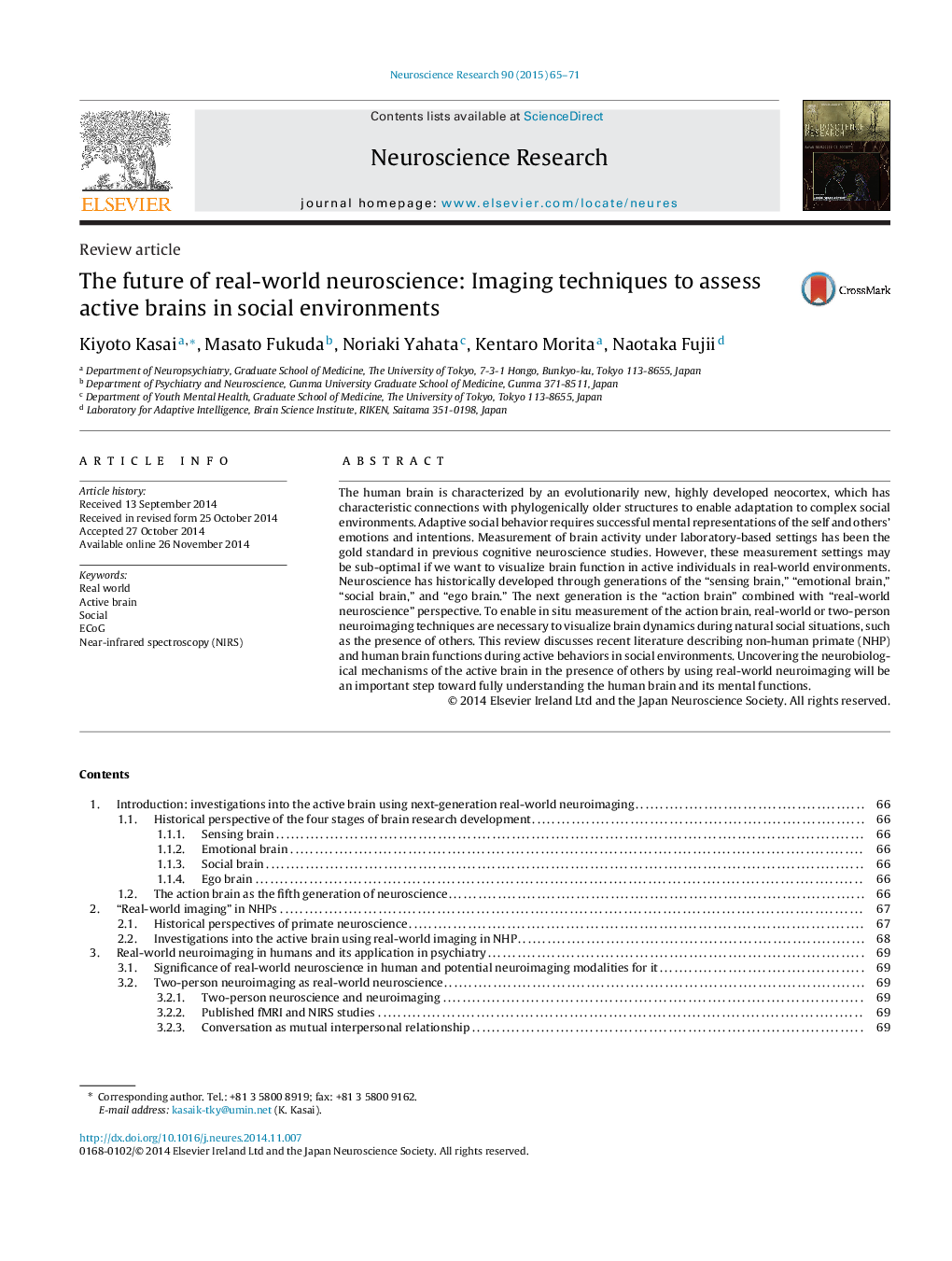| Article ID | Journal | Published Year | Pages | File Type |
|---|---|---|---|---|
| 6286169 | Neuroscience Research | 2015 | 7 Pages |
â¢The next-generation neuroscience will be the “action brain”.â¢Two-person imaging is necessary to know brain dynamics in natural social situations.â¢We review primate and human imaging studies of active behaviors in social situations.
The human brain is characterized by an evolutionarily new, highly developed neocortex, which has characteristic connections with phylogenically older structures to enable adaptation to complex social environments. Adaptive social behavior requires successful mental representations of the self and others' emotions and intentions. Measurement of brain activity under laboratory-based settings has been the gold standard in previous cognitive neuroscience studies. However, these measurement settings may be sub-optimal if we want to visualize brain function in active individuals in real-world environments. Neuroscience has historically developed through generations of the “sensing brain,” “emotional brain,” “social brain,” and “ego brain.” The next generation is the “action brain” combined with “real-world neuroscience” perspective. To enable in situ measurement of the action brain, real-world or two-person neuroimaging techniques are necessary to visualize brain dynamics during natural social situations, such as the presence of others. This review discusses recent literature describing non-human primate (NHP) and human brain functions during active behaviors in social environments. Uncovering the neurobiological mechanisms of the active brain in the presence of others by using real-world neuroimaging will be an important step toward fully understanding the human brain and its mental functions.
